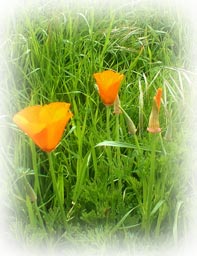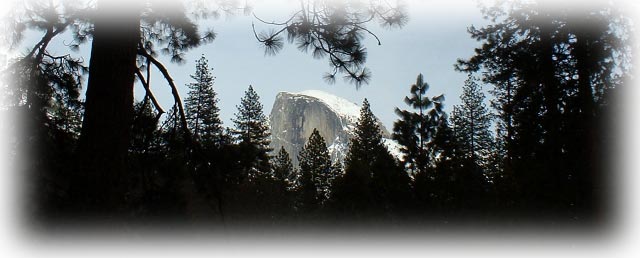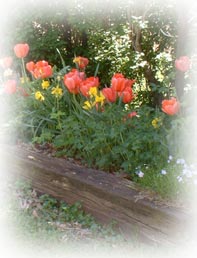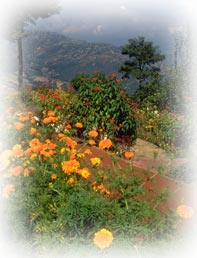
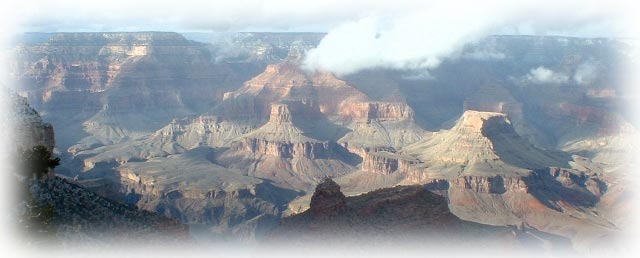
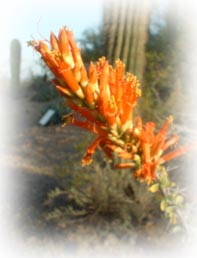
BOOKS
The Spirit's Terrain: Creativity, Activism, and Transformation (1998)
Green Days, White Knights: A Greenpeace Decade (in progress)
Clear Sky, Pure Light: Encounters with Henry David Thoreau (1978)
ESSAYS and JOURNALS
The Activism of Grace* (2001)
What I Want for America* (2001)
A Beluga Journal (1988)
A View from Thoreau's Island (1983)
SPEECHES
The Vision of the Heart* (2002)
On Making the New Earth (Bigelow Memorial Lecture, Middlesex School, 1990)
BOOKS
~~~~
Perhaps we should... revise our criteria for the title of hero. But I do not think we should eliminate the category. The phenomenon of heroism does exist, and I have seen it close at hand... Yes, there are heroes, and most of them are unsung...
The stunning opportunity to save time, in the deep sense outlined in the famous Course in Miracles, surely hinges on the willingness of individuals to rise beyond themselves -- not just on isolated occasions, but in a greater sense. An activism that proceeds from Robert Fritz's orientation of the creative, not from the less powerful stances of knee-jerk reactivity or even clever responsiveness, will represent such a genuine self-realization on the part of thousands or millions of people. The opportunity and even the likelihood of such a movement has been building everywhere, from churches and synagogues to personal growth workshops to the private discussions of those activists who have believed that there must be a more effective and powerful means or method or orientation by which to accomplish their worthy ends.
The so-called race to save the planet, along with the race to establish peace and justice and equity among peoples, is not quite a race, and not wholly dependent on the speed of our reaction to actual or impending catastrophe. The unspoken question in the hearts of activists everywhere -- Is there still time? -- has its place and function. Yet it betrays a limited perspective in the sense that time is, or can be, a more flexible commodity than most of us have been trained to believe. It bends and shifts in ways that may evoke awe and wonder in even the most detached and sophisticated astrophysicist. It favors the truly creative, extending to them that latitude which Thoreau extolled as the "license of a higher order of beings." And it favors those who are brave, not in the sense of melodrama but in the genuinely dramatic sense of recognizing the beauty of their opportunities and the uniquely individual vision to which they were born, and of acting on that recognition.
Certainly there is still time. If those of us who say we are committed to the vision of Eden show ourselves willing to learn and put into practice those principles by which the Garden would have originally been shaped, time may perfectly well be with us in a transcendent sense. But it will mean accepting that period of disorientation which accompanies the relinquishment of familiar formulas for living -- formulas many of us do not even like to admit we have. It will mean opening ourselves to the terrifying possibility that we really are, after all, just beginners, no matter how much we know or believe we have accomplished to date. As Marianne Williamson points out, we cling to familiar ways of thinking and doing because we are afraid accepting new ways would render us more powerful, not because we are afraid that letting go of the old ways would make us less so.
Considered from that Polynesian perspective illuminated by Margaret Mead, of a mysterious past which remains open and indistinct, the Garden may or may not ever have existed before. But that same tradition tells us that it is utterly real in the future, where it waits, resting on some faith that we will individually or together prepare a place for it here, now. It is borne on our thoughts and visions. It will be born through the midwifery of our willingness to learn and our humblest acts of commitment.
~~~~
Chapter One
I will tell you the story of an affair of the heart. The sometimes obscure object of desire is not in this case a person, but – though I use this word advisedly – an organization.
The story, by the way, is mine.
It is the personal story of a decade with Greenpeace.
Any good love story rests on improbable coincidences and connections, or at least events that would appear improbable until one understands that destiny is involved. This story is no different.
This is how it begins:
Chapter Two
The tourists visiting Boston in the summertime have a choice of nautical transport, from the pedal-powered Swan Boats plying the famously tranquil waters of the Public Garden to the tour boats in the once famously polluted Harbor. As a child growing up in the countryside beyond the western suburbs (it was still true countryside in those days), I had – on urban excursions with my parents – been taken for rides on the storied Swan Boats. Much later I had cruised along various parts of the New England coast in various forms of watercraft. But for whatever reason, until my thirties, when in Boston itself I had never ventured beyond the waterfront and was barely conscious of the tour boats.
This all changed with the wedding of my friends Rob and Ginny. They were avid recreational sailors with whom I had taken the only substantial sail-powered voyage of my life, a five-day odyssey from Massachusetts Bay to Northeast Harbor on Mt. Desert Island in Maine; they were married in the countryside, but opted for a maritime reception aboard a chartered Harbor tour vessel. It is thanks to them that I got not only that education in ocean sailing, but thereafter my first close introduction to Greenpeace.
In the fall of 1981, I developed two new interests which seemed at the time quite distinct – and purely avocational: photography, and volunteer public speaking on behalf of the environment. Rob and Ginny’s wedding came a few months later, in the spring. As our chartered boat circled Boston Harbor that April afternoon, there came a foreshadowing of a link between my two new pastimes, though I could not possibly have grasped it at that moment. I had busied myself with photographing the wedding couple, their friends, and the waterfront scene; returning to the quay, our boat passed a small ship at dockside. It bore the name, Rainbow Warrior.
Though I am sure I knew but little of Greenpeace, I must have read something of the group in a newspaper article or seen some account of it on television, for I recognized the vessel as a veteran of Greenpeace’ whale- and seal-saving voyages and – intrigued by what little I did know – snapped a photo of it against the Boston skyline. I associated the Rainbow Warrior, however dimly, with some manner of heroics, even if I did not remember particular details of whatever had put it on the front pages. Certainly I can claim no prescient knowledge of the sad fame that awaited the diminutive, converted fishing trawler, which would be sunk by French Secret Service mines three years later in New Zealand, taking with it to the bottom of Auckland Harbor the brave- and goodhearted photographer Fernando Pereira. I remember feeling some excitement as I took the picture; beyond that I did not attach much conscious significance to the moment.
Therefore I did not think much or deeply about this photographic encounter for some time. The resulting slide was technically unremarkable but it did clearly show the little ship with her distinctive green hull, and her even more distinctive rainbow-striped bow, moored below the historic Customs House tower. At some point it struck me that there was some connection between the ship with its small crew of activists, and Boston’s revolutionary and naval past (the scene of the Boston Tea Party was not far away, and the famed frigate Constitution – Old Ironsides – is moored a little to the north of where we docked). Perhaps this occurred to me as I took the picture, or perhaps I subsequently overlaid this thought on the event. In any case I did not dwell on the seemingly chance encounter, or its implications. In these latter days, however, I know well that it anticipated a revolution in my own life, and that the brief glimpse of the little reconstructed trawler – and my capture of the image on slide film – was a moment hinting at key elements of my future life and career.
~~~~
The material between these covers is the material from which, in 1974, I first began to draw a 'stage portrait' of Henry David Thoreau...
However, the real point of this book is not to attempt a definitive portrait of Henry Thoreau. At this late date, we are all pretty much free to make of him what we will, for better or worse -- those whose critical and sympathetic faculties are both richly developed will surely understand him best. I write these words a few short miles from Walden Pond, now a landmark for the world, and the point of this book is something any actor (which, Shakespeare notes, really should mean anyone) will understand: legendary though he has become, Thoreau was not an abstraction; he was a living, sentient man, with or through whom we can all identify ourselves. And, in that sense, he -- like John Brown -- is not gone. He treads the streets of Concord; scouts the ridges of Katahdin and Monadnock; overlooks the sea at Staten Island; and he walks the shores of Walden with each of us.
~~~~
ESSAYS and JOURNALS
~~~~
Late in the fall of 2000, I visited Dharamsala, in India -- home to the Tibetan government-in-exile -- as part of a personal odyssey extending from Tibet and ancient, ethnically Tibetan border areas of Nepal, where I had been invited to trek with a compassionate aid outfit called SEEDS. Stressed from travel -- and from profound learning experience -- I spent my first night in Dharamsala in a blessedly simple guest cottage, not far from the governmental compound and the residence of the Dalai Lama. I was the only guest that evening; I was served a very good dinner in the small dining room, which doubles as a sitting-area and contains books likely to be of interest to visitors.
As I finished my splendidly solitary dinner my eye fell on a book called Whispered Prayers. It contained powerful, black-and-white photos of Tibetan expatriates -- many, survivors of imprisonment and torture at the hands of the Chinese authorities -- taken by an American psychiatrist, Stephen R. Harrison. I began to read his accompanying commentary.
One of his observations has lingered in my thoughts. In interviews with his subjects, some of whom had been through experiences at least as grueling as those of American prisoners-of-war in Vietnam, Harrison found no indications of post-traumatic stress disorder. He could only speculate that the Tibetans' faith was of such a nature and intensity that, in some way, it protected them against the psychological havoc experienced by most torture victims.
One of the reasons this observation has stayed with me is that I have two Tibetan friends who have spent time in a Tibetan prison and were severely tortured. (Their "crime" was to mount "Free Tibet" posters in their home village.) One previously served for years as a monk, and had extensive monastic training and discipline. Both have scars, physical and psychological, that linger, but neither has ever struck me as suffering the deeper wounding that is post-traumatic stress disorder. And in their faces I have at moments seen a transcendent calmness and beauty which I think of as betokening the "presence of the Buddha."
I am a Christian, not a Buddhist. But this "presence of the Buddha" -- my own phrase for the phenomenon -- has shaken me a bit. Together with Stephen Harrison's observations, it makes me wonder deeply about the power of genuine reverence to give rise to activism carried out at great risk, and to guard the activist against damage to the spirit and possibly even to the soul. For me this is a part of a larger question about the role of spirituality and faith in activism...
I regard the link between true creativity and faith as inherent and unbreakable: one can only manifest a worthwhile goal with some degree of faith that "What you can see can come to be," and as a teacher of creative visualization, I mean this literally. -- I regularly maintain that to practice activism without the deliberate use of visualization is to approximate the carpenter who chooses to build a house with a stone and a butter knife instead of a hammer and saw; to overlook such powerful and readily available technologies seems almost unpardonable. I would prefer that activists go a good deal further and, through either traditional or contemporary forms of the vision quest, seek out an overarching vision for themselves and their work. But as a first step the practice of visualization in some form seems to me a sine qua non of enlightened activism.
Formal processes or no, the successful activism I have witnessed has required significant mobilization of the spirit. I believe that the greater and more conscious the mobilization -- whether achieved through means traditional or avant-garde -- the greater the gains, and the more lasting. I do not assume that all who have deliberately cultivated such mobilization will achieve the level of enlightenment and Gracefulness of Stephen Harrison's Tibetans. What I do heartily suppose is that we may gain far greater efficacy in our work, and some measure of the spiritual protection those brave souls have experienced. Grace extends itself to us at the level of our need -- and our potential ability to receive it. It is divine Love attending in unpredictable ways to needs we may not even know we have. We can extend ourselves to it, through practices formal or informal but genuine and from the heart, even before we remotely realize what it holds for us. In such extension we transcend karma, "odds," mundane material limitations, and quite possibly even the supposed limitations of time itself. That is not a bad position from which to begin the task of remaking this or any world.
~~~~
This is what I want for my country in the aftermath of terrorism.
I want us to think about what we want to create, rather than what -- or whom -- we want to destroy. I want us to focus with greater intensity than ever before in the life of this nation on our collective vision of peace rather than on waging war. I want us to focus on peace as if our lives and the lives of those we love depended on it, because they may.
I want us to focus on creation because it is a primary activity of love in the world while destruction is the routine activity of hate. Peace, rightly understood as an active and not a passive state, is the manifestation of love -- not love as mere sentiment, but love as a state of being. War, whether waged in the heat of anger or the cold calculation of "strategic thinking," is the effective manifestation of hatred.
I want us to think about justice rather than revenge, retaliation, or retribution...
I want America to demonstrate to the world that greatness is a matter of transcending everything to do with hate. I want us to rise to a level of greatness we do not even expect of ourselves.
I want the world to see all this. I want the world to rise and meet us, and I want us -- all -- to go forward on that plane to which, by such thoughts and actions as these, America in its heart of hearts has always yearned to ascend.
~~~~
I best understood the nature of the tour of the Greenpeace floating laboratory Beluga on the day I stood under Niagara Falls, looking up at the American rim, my heart and mind absorbed by the play of water, clouds and sunlight.
A friend of mine whose perceptions I share says that Niagara is the principal embodiment of Grace in the mineral kingdom on this planet. What we are doing to it therefore presumably would constitute something very nearly the opposite of Grace... if Grace allowed of opposites. We are fouling it with the worst poisons known to, and created by the hand of, man...
Nature will go on working where man is or is not present; still, on this planet at least, the meaning of her works and the opportunity to work with her in both the conceptual and physical evolution of the planet appears apprehensible only by human beings. (Like others, I have many unanswered questions about the dolphins and whales. Cetaceans, however, are not physically manipulating the planet.)...
June 11
Ashtabula, Ohio, has five Superfund sites and a 15% unemployment rate, belying the tedious argument that pollution is a tradeoff for economic vitality. Fields Brook, before World War II a fresh-flowing stream in which the local people fished, is now one of the Superfund target areas. A few durable local people, like the family with whom I stayed here, have continued to work for change; callers to a local talk show welcomed us, one proposing we be awarded medals. They might better be awarded to the local activists, who labor unsung.
Standing next to the discharge pipe shared by Reactive Metals, Inc., Detrex Corp., and Occidental Chemical... the fumes made our heads reel... This day Toronto's Patricia Chastang and I plugged it... cabled ourselves to the plug, and waited...
Somewhere near the end of this vigil, a hapless frog appeared in the stream; he came under the thoughtful care of Steve Loper, coordinator of the action, in the form of bath and eventual transport to a fitter home. Ultimately the plug, imperfectly fitted though it was, caused sufficient corporate consternation that the Sheriffs were pressed to take us in. At the jail, two deputies briefly debated the merits of our work. One of them, with a third, eventually asked us where to send contributions. The third invited us home for dinner.
July 18
In Ann Arbor, visiting with my friend Steve Gordon, I was struck by how many gardeners there are in this world. Here in particular was one who had left an entire career behind in favor of becoming a landscaper, shaping small worlds one by one.
Possibly the earth will be saved and indeed recreated by an entire network of gardeners, implicitly if not knowingly linked all across the planet.
Possibly this is already occurring.
~~~~
The early morning sunlight was breathtaking on the firefall of autumn leaves, but the icy October wind on the hill above Greenville was ferocious... Outside... the wind savaged whole trees of their foliage, scattering flaming ruins of hilltop scenery now east towards Katahdin and Millinocket, now south towards Bangor...
Exactly a year ago, in 1981, I had come to Greenville for the first time, searching for nature in some sort of pure and original form, searching for wildness, searching for history in the ephemeral wake of Thoreau who had come a century-and-a-quarter before...
Another dangerous wind, risen from nowhere, gives us a few long, breathless moments as we make the mile-and-a-half crossover to the eastern side.
Once across, we strike out for the foot of the lake. As we bear down on the last point, even the indefatigable Scott seems to flag and we slowly close ranks. There is the sadness of something extraordinary coming to an end. It is unlikely that we will ever be together again in one spot, let alone in such singular circumstances as these.
Above the shore, as we clear the point, suddenly rises the summit of Katahdin, snow-covered, implacable, a shining symbol of wilderness in the October sun. There are, I apprehend, aspects of nature that seem inviolable in spite of all evidence to the contrary. And there are still some images that bespeak a permanence of human thought and memory.
On the last morning, I was up in time to spend my last remaining film on the sunrise. The mist glowed, rose-colored, above the trees that hid the mountain from view; after taking a last picture I climbed warily among the uneven rocks of the island's edge, to look back up the lake as its surface grew bright in the dawn. After breakfast, we packed up our gear and maneuvered the canoes into place for loading along the stony shore.
We set out in our usual, casual way, with the ghosts of our private perceptions and memories drifting among us, for the point at the end of the lake, and the long ride home. Above us, casting its blinding reflection on the water, the sun, too, rose at an accustomed pace, silently turning the lake into sky.
~~~~
SPEECHES
~~~~
[Intro: slides/music, "Bound by the Beauty;" about four minutes. Final slide: HH the Dalai Lama with Desmond Tutu.]
The song was "Bound by the Beauty," by the great Canadian singer-songwriter Jane Siberry. The lyrics, in part -- I hope you could hear them -- are, "I'm coming back in five hundred years;/The first thing I'm gonna do when I get back here/Is to see... these things I love,/And they better be here,/Better be here,/Better be here."...
(About that last slide: I'm leaving that one up. I'll say some more about that in a moment.)
For most of us that idea of "coming back" may seem pretty speculative. My Tibetan friends, though, they'd take that pretty seriously -- "I'm coming back in five hundred years." Either way: we might agree that it's worth working toward something worthwhile that might last the five hundred years.
What we work toward is up to us. The truth of the matter is that there is a vision in the heart of every person, if you choose to go in and look for it. I have seen it everywhere I have traveled, everywhere in America, and in Tibet and in Nepal and in Dharamsala in India, and others, who have traveled far more widely than I, have seen it further afield. Across original cultures from the Middle East to Africa to Europe to Asia to Australia to America one can trace the outline of that universal vision. It's the image of the earth as a garden. That's what I call that vision, the World Garden. And I am convinced that, in their hearts, it really is what everyone yearns to work towards. If they could just figure out how to do it without too much risk, too much pain, too much... rearrangement.
So what do we do to work toward it as individuals? If we decide to at least explore the territory of the risk, and the pain... and the "rearrangement"? That's... individual. But somewhere in each soul and in each heart is the sense of some part of the vision that is uniquely right for that individual to contribute to -- to conceive, develop, evolve, and most critically, to act on behalf of.
The visionary, the real visionary, the one who gets his or her hands dirty and makes the idea -- no: the ideal -- manifest in reality, is often, though not always, the agitator -- in the best sense...
I'll tell you something else about vision. I was writing a book, about all this stuff, about six or seven years ago, and I was watching TV one night and a man came on a talk show -- a pretty good talk show, Charlie Rose, I'm not talking Springer here -- and he said something that made me sit right up straight and then grab for a pencil and a piece of paper. The man was Cornel West -- I'd read Race Matters, I was writing for the same publisher who put it out and they'd given me a copy -- and what he did, he summed up one of my major themes in a single sentence. He said this:
"We will not allow the present circumstances to dictate our conception of the future."
I had a whole chapter planned to say that, and he said it in fourteen words...
It takes time, time for the vision to manifest here, you know? And we hurt with the waiting. That's Desmond Tutu crying out, "God, why must it take so long?" But it came; in South Africa, the miracle came; the transformation came. It can happen anywhere. Miracles come by invitation.
That slide: that's Desmond Tutu and the Dalai Lama, and I guess it was taken at the Earth Summit in Rio in 1992, because nobody I've talked to can figure out where else it could have been taken. That's two of my heroes up there. The Dalai Lama wrote a Foreword to that book I was writing when I heard Cornel West on Charlie Rose. He never met me, never heard of me, I wrote the Dalai Lama out of the blue -- it was my wife's idea -- and he wrote the Foreword to that book. And that's a miracle. And in the original draft of the book, I quoted Desmond Tutu -- that was before it got edited. And a few months later, I got back one of these slide projectors down here -- I'd loaned it to a Greenpeace colleague -- and that slide was in the gate. I tried to give it back, and my friend said, "That's not mine. I don't know where that came from." So, I have a slide of Desmond Tutu and the Dalai Lama, smiling, laughing together, and nobody knows where it was taken or who took it, and nobody knows where it came from.
Now, that's a miracle too.
Miracles come by invitation.
Know the vision. Get to know the vision. It's in your heart, it's in your soul, it came in here with you, it's not going to die. Get out and agitate, get out and sing, get out and do what Creator created you for. Live in joy.
God bless.
~~~~
It would be very easy to assume from looking at pictures of the work of Greenpeace that we are in the business of advertising problems and looking for solutions. That would not be entirely inaccurate, but it would miss a dimension of our work which is probably more important than solving any single problem, and that dimension is what I would like to speak to you about today.
If your orientation towards life is only solving a given problem and then the problem that follows and the problem that follows that, you may indeed accomplish great works; but the joy which is reserved for artists, those who create, will be in some measure absent from your life. And what I am really here today to talk to you about is a shift on this planet from an orientation toward solving problems to an orientation of treating the planet as a work of art, of which each one of us is in fact a creator.
I came to Greenpeace, as you heard, after experimenting in a variety of disciplines, and the easiest thing to say about how I got to Greenpeace is that I was called. It really is as simple and as challenging as that...
It may be found in the end that courage... is only the act of doing what is truly wanted at a given moment when you have presented yourself with the opportunity. It's as simple perhaps as having made a choice that got you to that situation in the first place, and then saying Yes when the situation comes up, because it literally seems that there is no other reasonable alternative. And it is that concept that I am really endorsing today, and recommending to you all. I hope you will come to perceive that the planet, which is our work of art, is an unfinished piece. It is not something that was created a while back that we now get to do things with, to manipulate in some way. It isn't done. It is progressing. However painful the progress may be... we are in it. We are all in it and it is going to catch us up sooner or later, hopefully catching us up in a way that we can enjoy, but as I suggested at the beginning of this talk, it is surely those who see the artist in themselves most clearly who will find the joy most easily apprehensible, and who will share with us the greatest fruits of courage -- and of love.
